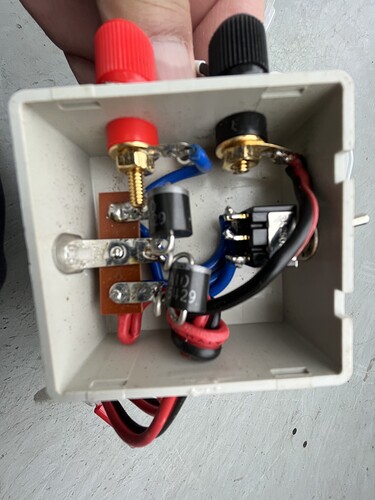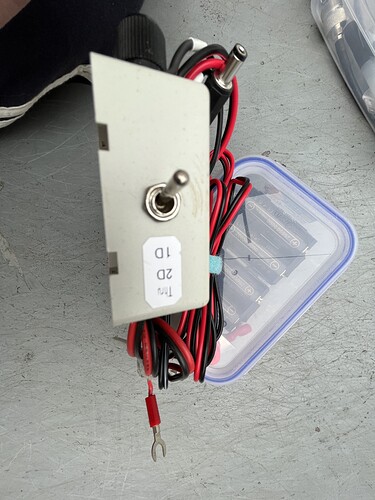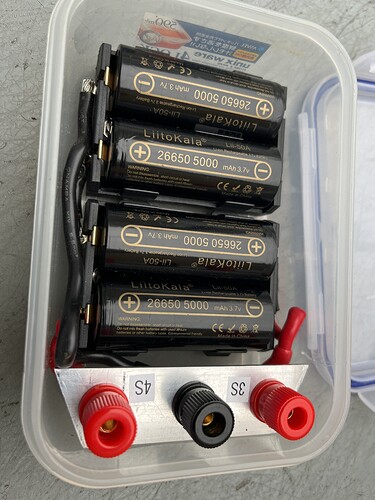I built a 4x3.7V 26650 LFP cell battery pack with a CF-4S30A-A BMS based on OH8STN’s videos. A few questions:
-
I had charged the new 26650 batteries on a LFP slot charger that came with some 18650 batteries before the build and measure -15.6V for the DIY battery pack on my VOM. Is that likley overcharge from the slot charger?
-
My VOM measures -15.6V - the Black test lead on the -P pad and Red lead on the +P pad of the CF-4S30A-A BMS. I guess I don’t understand why that’s reading a -V rather than +V (I’m a biologist).
-
How best to discharge from 15.6V down to a safe operating range? I’m not sure what to use for a load. Can I splice some Power Poles onto a coax jumper and discharge into a 50ohm Dummy Load?
-
I have Power Poles on wires soldered to the -P/+P pads - can I use my Bioenno battery charger to charge my DIP battery pack? The charger specs are - Output: 14.6VDC, 2A (CC/CV Charge Profile for LiFePO4 Batteries).
I have a Genasun GV-5-mod charge controller on order for use with a solar panel but that’s a few weeks out on delivery.
Thanks! Bret/N4SRN


